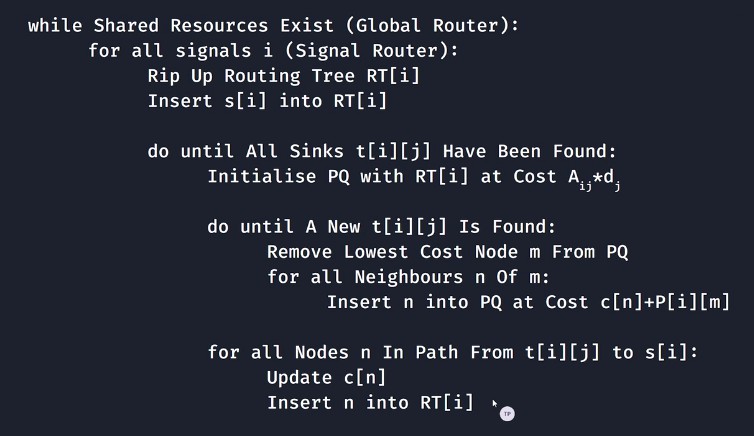Seminar: FPGA Routing
Contents
FPGA Routing is a way of deciding the amount of area used by wire segments and programmable switches as compared to area consumed by logic blocks. A
Allows logic block I/O to be connected to a larger circuit
Long paths - propagation delays
Goals for efficient routing
- Get it all routed
- Avoid congestion
- Minimal delay
Problems
Lack of routing resources. Whilst we could use routing trees, these trees become a critical path and become a source of resource constraints in themselves.
"Rip-up and retry" algorithm proposed - but the success of a route is dependent on both the choice of which nets are routed, but also the order of rerouting
Other variations
- blame factor
- global router
- delay
Coarse Graph Expansion Algorithm (CGE)
Background Information

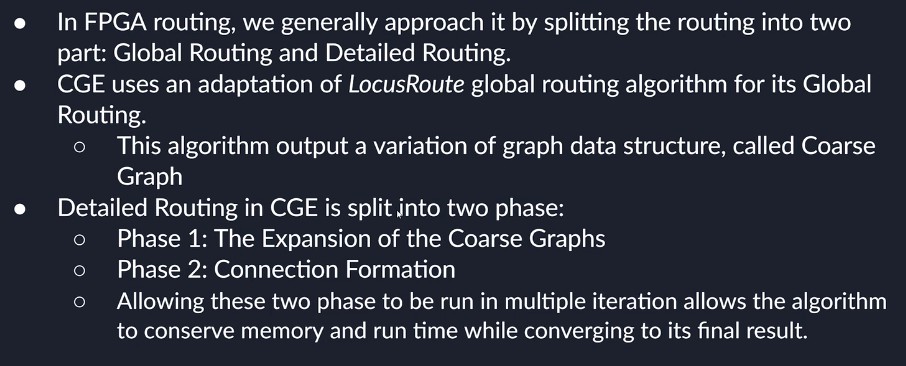
Cost Function Design
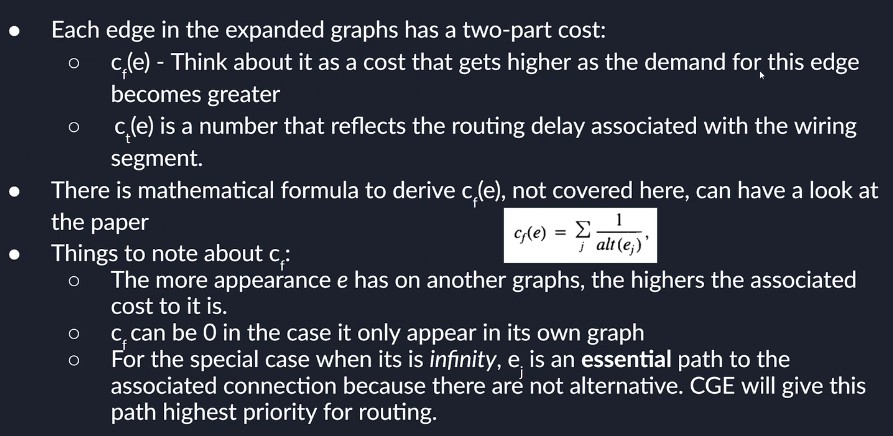
A routing conflict
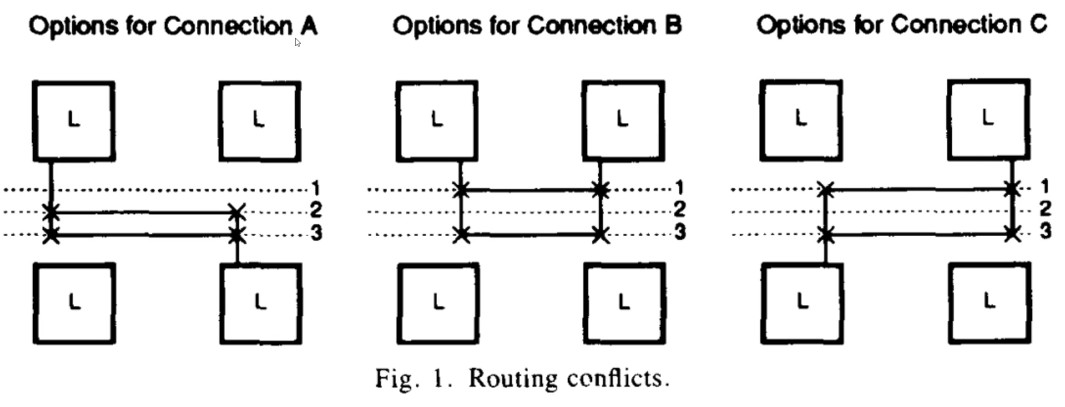
Algorithm - LocusRoute Global Routing
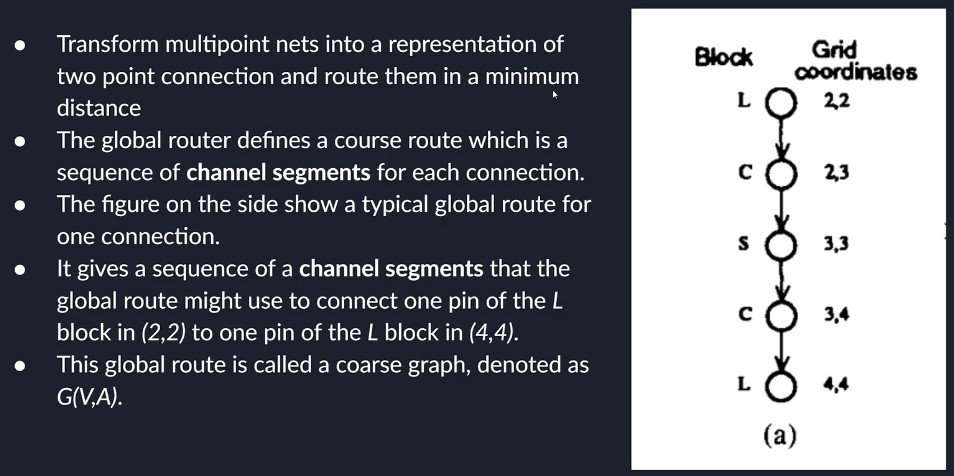
Notes: "two point connection" = logic block
Post operation
We need to choose the best wiring segment to implement the connection
Detailed Routing


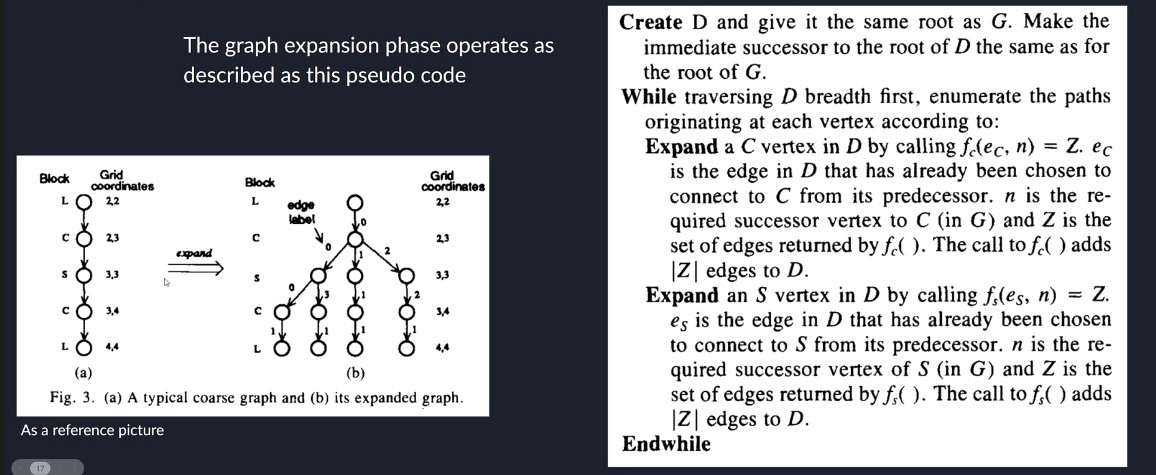
Connection Formation
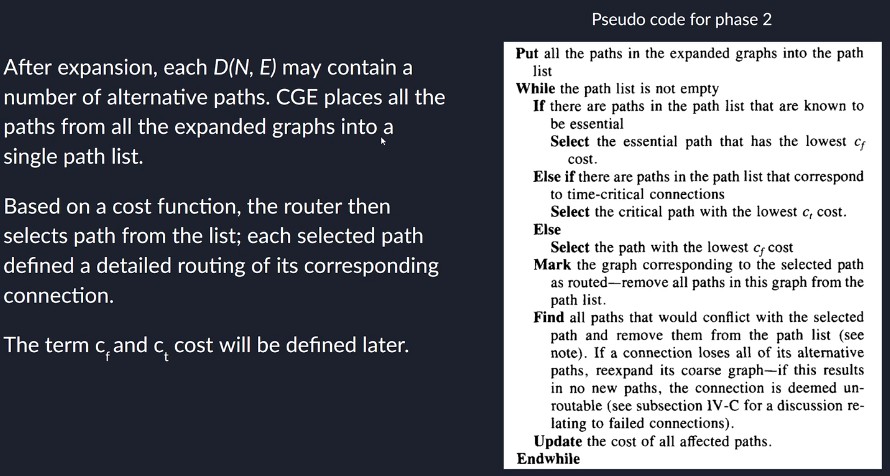
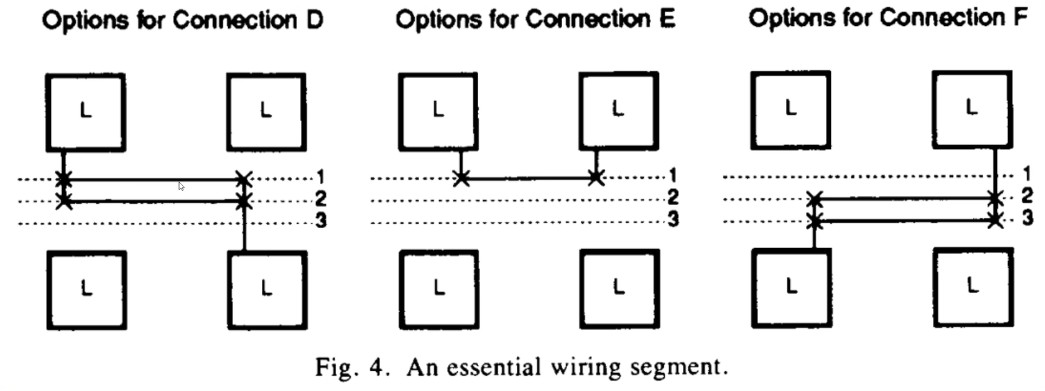
Controlling Capacity
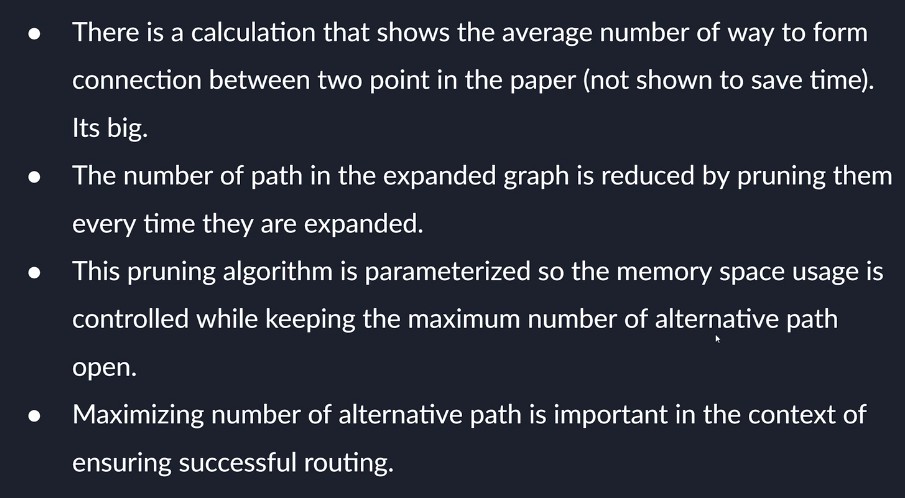
Pruning Algorithm

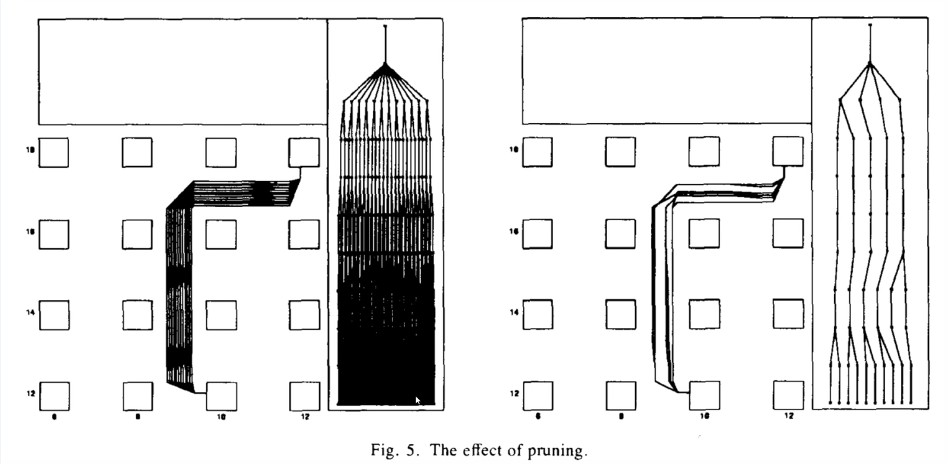
Iterative Approach to Design

- Start with small value parameters, if not possible / timeout, then increase parameters
Pathfinder Algorithm


The global router instructs the signal router to select a path from a source to a sink.
Creates a MST tree (hence shortest paths)
Slack Ratio

Ratio = Longest path used by the resource : Longest path in the graph
Ratio ~= 1 -> Higher priority since it is more of a critical path
Cost Function

A_ij = Slack ratio from i to j
Negotiated Congestion/Delay (NCD) Pseudocode
